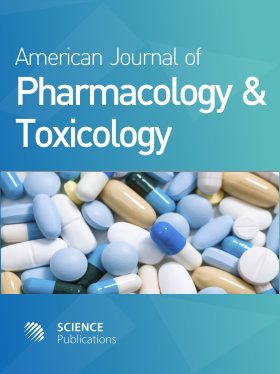Effect of New Compound with Antioxidant Potential in the Energy Metabolism of Adults Rats after Pneumococcal Meningitis
- 1 Avenida Universitária, Brazil
- 2 Universidade do Extremo Sul Catarinense, Brazil
- 3 Universidade do Sul de Santa Catarina, Brazil
- 4 Laboratório de Sistemas e Integração de Materiais (ISM), France
Abstract
Problem statement: In bacterial meningitis, the Streptococcus pneumoniae can modify the cerebro-spinal fluid (CSF) homeostasis and initiation of the host inflammatory response with presence cytokine and leukocyte migration into the subarachnoidal space. Despite the availability of highly effective antibiotics, the disease is often fatal or causes long-term neurological problems in affected patients. Approach: The aim of this study was to evaluate the effect of this new compound P0801 in the oxidative stress, mitochondrial respiratory chain and brain Creatine Kinase activity (CK) in adult rats after meningitis by S.pneumoniae. Results: In our study, the group of animals with pneumococcal meningitis that received P0801, with or without antibiotic therapy at 24 h after induction decreased protein carbonyls in cerebral cortex and in the hippocampus at 48 h after induction, being that the same time decreased lipid peroxidation. In the animals that received antibiotic therapy and or treatment with P0801 at 24 h after induction of meningitis, there were increased by the activity of complex I, II, IV and enzyme succinate dehydrogenase in cerebral cortex, being that at 48 h in the group that received antibiotic therapy and or P0801, there were increased by the activity of complex I, II and succinate dehydrogenase in the cerebral cortex and or hippocampus. In our study, the CK activity was increased in hippocampus and cerebral cortex at 24 h after induction meningitis in the group that received antioxidant treatment and only in cerebral cortex in the group that received antibiotic therapy with antioxidant treatment. Conclusion/Recommendations: The study with new compound is an attempt to coadjuvant treatment with the antibiotic to minimize the oxidative damage and energy metabolism during illness. New studies are needed to clarify the action of this new compound as coadjuvant, evaluating side effects and their formulation, since it might look promising in the development of novel therapeutic agents in further studies.
DOI: https://doi.org/10.3844/ajptsp.2012.49.61

- 6,258 Views
- 4,710 Downloads
- 1 Citations
Download
Keywords
- Streptococcus pneumoniae
- meningitis
- energy metabolism
- oxidative damage
- antioxidant treatment
- cerebral cortex
- hippocampus
